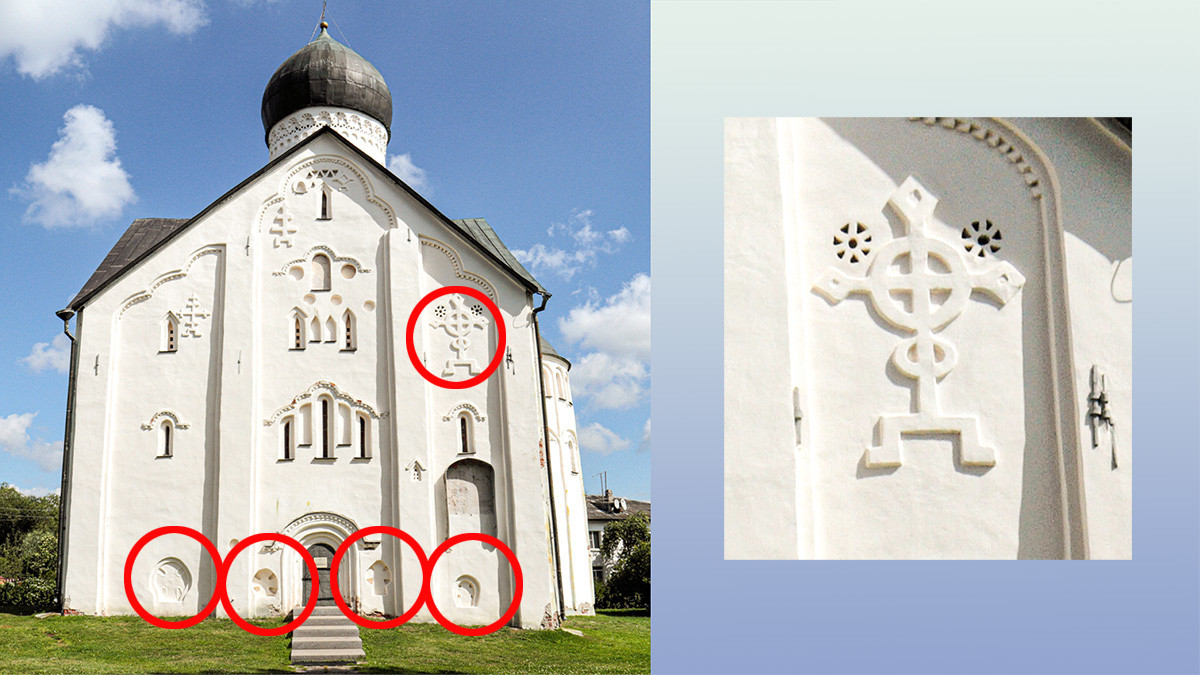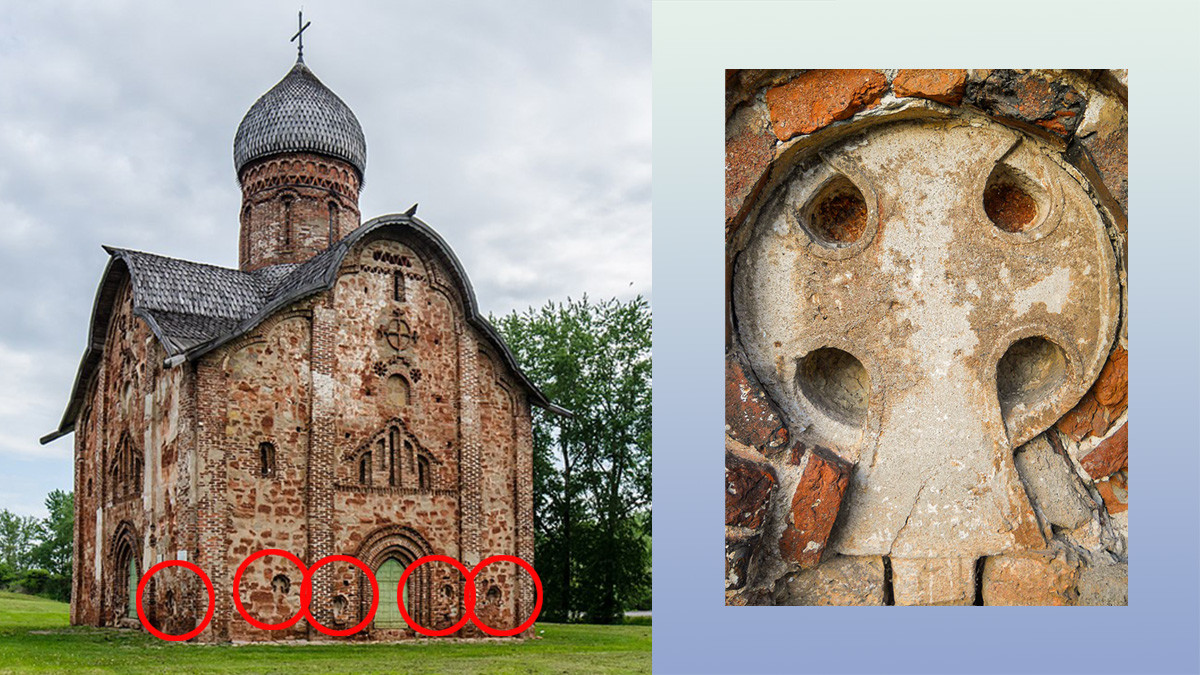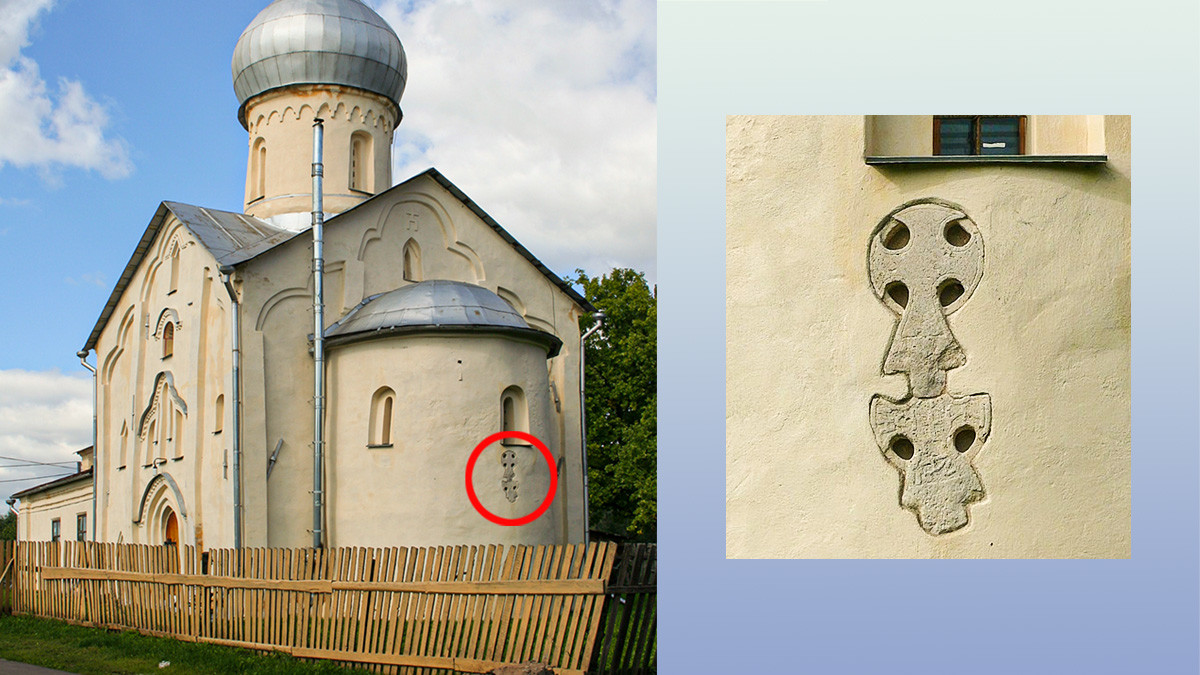Veliky Novgorod: How Celtic Crosses Came to Russia
Sarang (CC BY-SA 3.0) / Legion Media
Crosses can often be seen in a circle in historic Russian cities. How did this Celtic tradition get to Russia?
In Veliky Novgorod, one of the oldest cities in Russia, there are still some old stone churches. Some have a special (to the Russian eye) architectural feature: crosses on the facades, partially surrounded by a circle. The Russian Orthodox standard cross, on the other hand, consists of only four cross bars, one vertical and three horizontal.

Russian Orthodox Cross
RickP (CC-BY 2.5)
It is interesting that these “non-Russian” crosses are often found in Veliky Novgorod itself, but not in neighboring areas. They are completely unknown in other regions of Russia. How did the Celtic crosses get to Veliky Novgorod?
Novgorod Cross
Before the unification of the Russian lands into a single state in the late 15th century, Novgorod was an independent republic with elected government officials for three centuries, while most of the other Russian states were principalities where power was hereditary. This explains why Novgorod developed its own church architecture and symbols in the 14th to 15th centuries. In addition, the Tatar-Mongol invaders who looted many cities in central Russia did not reach Novgorod, so the city was able to preserve its oldest churches with these symbols.
The four-pointed cross in a circle is even known as Novgorodsky in Russian. In the city you can also find Poklonnije crosses as monuments. You stand alone, often by the wayside. They remind of memorable events and military victories or show biblical scenes. Some of them are two meters high.

The Alekseewsky Memorial Cross from the 14th century is located in the city’s most important place of worship, the St. Sophia Cathedral
Fyodor Borisov (CC BY-SA 4.0)
Many crosses are also found in niches on church facades. There they stand in memory of the deceased.

The 14th century Church of the Transfiguration of the Lord on Iliina Street
Legion Media
For many, the design is similar to the familiar Celtic crosses that spread across the British Isles and France in the early Middle Ages. The circle represents the pagan symbol of the sun. This continuity was important for the Celts, who had only recently accepted the Christian faith.

An 8th century stone cross on Islay, Scotland
Mary Williams (CC BY-SA 2.0)
Some legends from various sources support the hypothesis of the Celtic origin of the crosses. One of them, for example, suggests a Celtic-Warsaw origin of the Russian statehood. According to the Norman theory, officially advocated by historians, the East Slavic tribes asked the Varangians (that is, the Vikings) to rule over them. Prince Rurik went near Veliky Novgorod and his two brothers Sineus and Truvor to Belozersk and Izborsk, respectively. According to the Celtic-Varangian legend, these Vikings had Celtic roots, which is indirectly confirmed by the presence of several circles with inscriptions in Izborsk (today’s Pskov region).
However, it is not clear why crosses in the Celtic style appeared in Northern Europe in the late 8th century, but not until the 14th-15th centuries in Russia. In addition, the Novgorodsky cross is shaped differently than the Celtic cross. In Novgorod, the horizontal crossbars look more like blades and are more inconspicuous than the vertical crossbar.

l. – Novgorod Cross, r. – Celtic cross
V4711 (CC BY-SA 3.0) / Legion Media
In addition, there are various Novgorodsky crosses that are not at all similar to the Celtic ones.

The Church of Saints Peter and Paul from the early 15th century in Koschevniki
Belliy (CC BY-SA 4.0); Evsukow (CC BY-SA 3.0)
Similar crosses were also found in the Isborsk, Pskov and Lake Ladoga regions, as well as in Europe – in the former territories of the Livonian Order. The Livonian and Germanic orders repeatedly attacked the Novgorod lands. This led some historians to suggest that such crosses were of Germanic and not Celtic origin.
The fact that Novgorod traded with Europe as a member of the Hanseatic League (a large political and economic union of cities in northwestern Europe that existed until the mid-17th century) also speaks for the influence of Germanic culture.

The church of St. John the Evangelist from the early 14th century with a “round” cross
A. Savin, WikiCommons; Dar Veter (CC BY-SA 3.0)
However, most researchers tend to assume that these crosses have nothing in common with the Celts or any other Western European.
Historians examined the unusual Novgorodsky crosses as early as the late 19th to early 20th centuries and concluded that they had similarities with the tradition of Byzantium, from where Orthodox Christianity came to Russia. “The shape of these crosses presumably comes from the usual Byzantine crosses in a circle, which most likely represent a halo or perhaps a crown of thorns,” wrote historian Alexander Spitsin in 1903. This theory is supported by modern historians.
By the way, in the 16th century the fashion of the crosses set in a circle in Novgorod died out. Historians believe that either wars and epidemics reduced the number of master craftsmen available, or that Moscow, which was dominant at the time, restricted the use of the regional symbols.
>>> Orthodoxy for Beginners: Everything you need to know about Russian national beliefs
All rights reserved. Duplication is permitted only with reference to the source and active hyperlinks to the original material.




